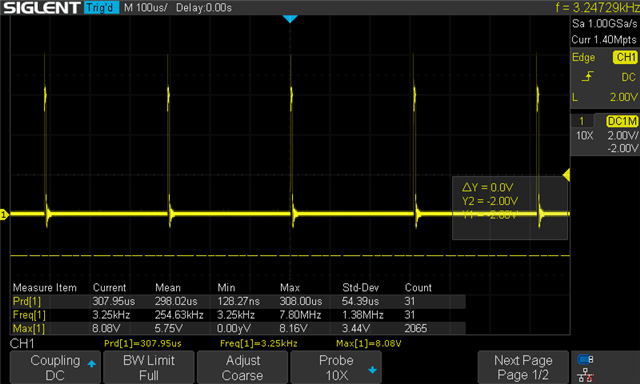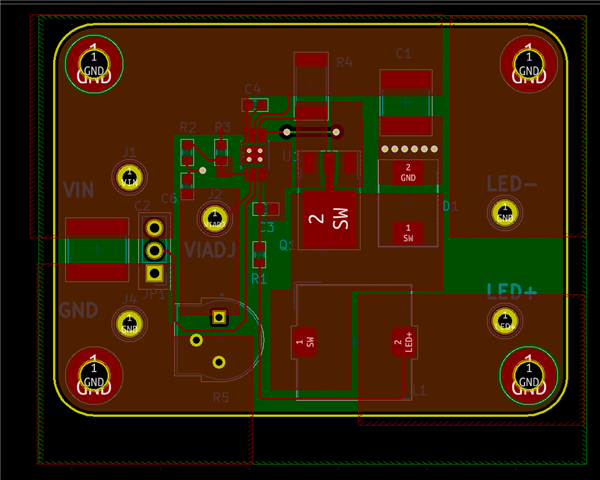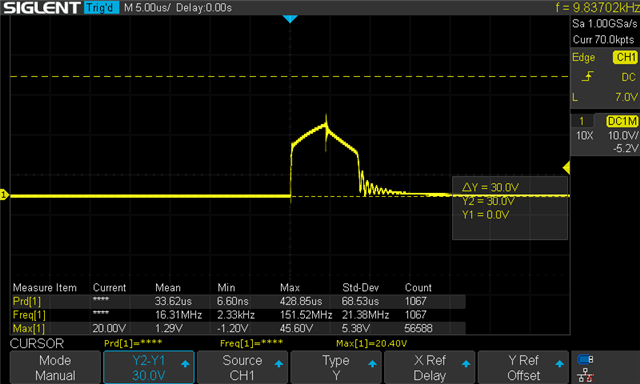I'm developing an application that uses an LM3409 to drive a strip of 8 LEDs with a combined voltage drop of 25V with a current draw of 360mA (+- 25%) from a power supply at 28V. I am targeting a frequency of 462khz, with a TOFF of ~120ns. I have derived the following values for my passives from the datasheet math:
Duty cycle @ 95% efficiency: 25 / (0.95 x 28) = 0.94
TOFF: -28 (4.7e-10 + 2e-11) x Ln(1 - (1.24 / 25)) = 1.3e-7
Fsw: (1 - 0.94) / 1.3e-7 = ~462,000
ROFF: 5.2kΩ
Imax = 0.36 + (0.36 * 0.25) = 0.45
Rsense: 1.24 / (5 x 0.45) ~0.55Ω
I'm also using a 47µH inductor, which is larger than required, but reduces my costs for reasons relating to the way the assembly is priced. In order to test my design, I created a layout which essentially duplicates the LM3409 evaluation board, but using my own values for the passives. The issue I am encountering is that the board is powering the LEDs at a much lower current than the value of Rsense should produce. Just for a sanity check, I swapped Rsense for the 0.2Ω resistor that the evaluation design uses, and the board emitted the correct current, although the VIADJ control was extremely non-linear.
The value I am seeing with an Rsense of 0.55Ω is ~10mA, which is dramatically lower than the 360mA I should be seeing.
I took some measurements with my oscilloscope, and this is what I am seeing:

With the scope probe ground on the gate of the PFET and the probe on the source, I'm seeing a roughly 130ns pulse, which makes me think the timing is being set correctly.

The TOFF however, appears to be on the order of 300µs, which puts the overall frequency at ~3.25khz. From what I could derive from the datasheet, the TOFF is determined by the measurement of the voltage drop across Rsense.

With the probe ground on the circuit ground and the probe on the SW node, I see a fair bit of ringing, though I'm not sure that would cause the problem I am seeing.

With the probe on Vout the peak voltage looks right, but the pulse is again much too short to produce the desired current output.

For a sanity check I probed VIADJ, and I am seeing an odd pulse which I assume is noise from elsewhere in the circuit. The voltage reads as 1.23V on my DMM however.

For reference, this is my board layout, which you can see if heavily derived from the evaluation design.



